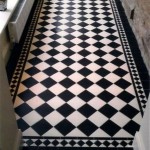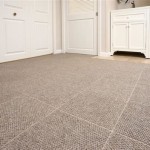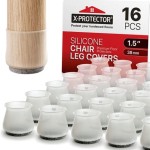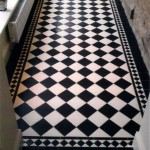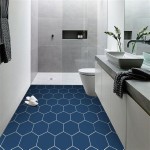Best Flooring Options for Kitchen and Dining Room Spaces
Selecting the appropriate flooring for a kitchen and dining room requires careful consideration of several factors. Durability, aesthetics, maintenance, and cost all play crucial roles in the decision-making process. These areas are high-traffic zones prone to spills, stains, and wear. Therefore, the chosen flooring should withstand daily use while complementing the overall design of the home.
This article will explore various flooring options suitable for kitchens and dining rooms, outlining their respective advantages and disadvantages to aid in making an informed choice. Factors such as water resistance, ease of cleaning, comfort underfoot, and visual appeal will be discussed for each type of flooring.
Hardwood Flooring: Classic Elegance and Durability
Hardwood flooring is a popular choice for many homeowners due to its timeless appeal and inherent durability. Available in a variety of wood species, colors, and finishes, hardwood adds warmth and character to both kitchens and dining rooms. Common hardwood options include oak, maple, cherry, and walnut, each offering a unique grain pattern and hardness level. The Janka hardness scale is a useful tool for assessing the resistance of different wood species to dents and scratches.
One of the primary advantages of hardwood is its longevity. With proper care and maintenance, hardwood floors can last for decades, making them a worthwhile investment. Refinishing can restore the original luster of hardwood floors, extending their lifespan and allowing for a change in color or finish to match evolving design preferences.
However, hardwood is susceptible to water damage and can warp or stain if exposed to moisture for extended periods. In kitchens, where spills are common, it's crucial to promptly clean up any liquids. In dining rooms, precautions should be taken to prevent spills from beverages or sauces seeping into the wood. Engineered hardwood, which consists of a hardwood veneer over a plywood core, offers improved moisture resistance compared to solid hardwood, making it a more suitable option for kitchens.
Maintaining hardwood floors involves regular sweeping or vacuuming to remove dirt and debris, as well as occasional damp mopping with a wood-specific cleaner. Avoid using excessive water or harsh chemicals, as these can damage the finish and the wood itself. Area rugs can provide additional protection in high-traffic areas and help to minimize wear and tear.
The cost of hardwood flooring can vary significantly depending on the wood species, quality, and installation method. Solid hardwood is typically more expensive than engineered hardwood. Professional installation is recommended to ensure proper acclimation, subfloor preparation, and secure fastening.
Tile Flooring: Practicality and Versatility
Tile flooring is a highly practical and versatile option for both kitchens and dining rooms. Available in a wide range of materials, sizes, colors, and patterns, tile offers endless design possibilities. Common tile materials include ceramic, porcelain, and natural stone, each with its own unique characteristics and benefits.
Porcelain tile is known for its exceptional durability and water resistance, making it an ideal choice for kitchens where moisture is a constant concern. Its dense composition makes it impervious to water penetration, preventing stains and damage. Ceramic tile is another popular option that offers good water resistance and durability at a lower cost than porcelain.
Natural stone tiles, such as granite, marble, and slate, add a touch of luxury and sophistication to any space. Each stone tile has unique veining and color variations, creating a one-of-a-kind look. However, natural stone can be more porous than ceramic or porcelain and may require sealing to protect against stains and moisture. Regular cleaning is essential to maintain the beauty of natural stone tiles.
Tile flooring is easy to clean and maintain, requiring only regular sweeping or vacuuming and occasional damp mopping. Most spills can be easily wiped away without leaving a stain. However, grout lines can be prone to staining and may require periodic cleaning with a grout cleaner or sealant.
One potential drawback of tile flooring is its hardness, which can make it uncomfortable to stand on for extended periods. Area rugs can help to mitigate this issue by providing cushioning and warmth underfoot. Radiant heating systems can also be installed beneath tile floors to provide added comfort during colder months.
The cost of tile flooring varies depending on the material, size, and complexity of the installation. Natural stone tiles are typically more expensive than ceramic or porcelain tiles. Professional installation is recommended to ensure proper subfloor preparation, tile alignment, and grout application.
Luxury Vinyl Flooring: Affordable and Durable Alternative
Luxury vinyl flooring (LVF) has gained significant popularity in recent years as an affordable and durable alternative to hardwood and tile. LVF is available in planks (LVP) and tiles (LVT), mimicking the look and feel of natural materials while offering enhanced performance characteristics.
One of the key advantages of LVF is its exceptional water resistance. Unlike hardwood, LVF is impervious to water damage, making it a suitable choice for kitchens and dining rooms where spills are common. Its durable construction can withstand heavy foot traffic, scratches, and stains, making it a low-maintenance option for busy households.
LVF is available in a wide range of styles and colors, including realistic wood and stone patterns. Advanced printing technologies create a textured surface that closely resembles the look and feel of natural materials. Many LVF products also feature a wear layer that protects the surface from scratches and abrasions.
Installation of LVF is relatively straightforward, with options for glue-down, click-lock, and loose-lay methods. Click-lock LVF is particularly popular for DIY projects, as it requires no adhesive and can be easily installed over existing subfloors. Loose-lay LVF offers even greater flexibility, as it can be installed without any adhesive or fasteners, making it easy to remove and replace.
Maintaining LVF is simple and requires only regular sweeping or vacuuming and occasional damp mopping. Most spills can be easily wiped away without leaving a stain. Avoid using abrasive cleaners or harsh chemicals, as these can damage the surface of the flooring.
While LVF is generally more affordable than hardwood or natural stone, the cost can vary depending on the quality, thickness, and features of the product. Higher-end LVF products often feature thicker wear layers and more realistic designs, resulting in a higher price point. Professional installation is recommended to ensure proper subfloor preparation and secure fastening.
Cork Flooring: Eco-Friendly and Comfortable
Cork flooring is an environmentally friendly and comfortable option for kitchens and dining rooms. Made from the bark of the cork oak tree, cork is a renewable and sustainable resource. Cork flooring offers a unique combination of properties, including cushioning, sound absorption, and insulation.
One of the primary advantages of cork flooring is its natural resilience. Cork is naturally elastic, providing cushioning underfoot and reducing fatigue. This makes it a comfortable option for kitchens and dining rooms where people spend a lot of time standing. Cork also has excellent sound absorption properties, reducing noise levels and creating a quieter environment.
Cork flooring is naturally resistant to mold, mildew, and pests, making it a healthy choice for homeowners with allergies or sensitivities. Its antimicrobial properties help to inhibit the growth of bacteria and fungi, contributing to a cleaner and healthier indoor environment.
However, cork flooring is relatively soft and can be susceptible to dents and scratches. Heavy furniture and sharp objects can damage the surface of the flooring. It's important to use furniture pads under heavy items and to avoid dragging heavy objects across the floor.
Cork flooring requires sealing to protect against moisture and stains. Regular sealing is essential to maintain the appearance and performance of the flooring. Spills should be cleaned up promptly to prevent staining. Avoid using harsh chemicals or abrasive cleaners, as these can damage the sealant and the cork itself.
The cost of cork flooring can vary depending on the thickness, quality, and finish of the product. Thicker cork planks offer greater cushioning and durability. Professional installation is recommended to ensure proper subfloor preparation and secure fastening. Cork can be installed as floating floors or glued down.
Linoleum Flooring: A Sustainable and Durable Choice
Linoleum flooring is a sustainable and durable option made from natural materials, including linseed oil, rosin, wood flour, cork dust, and pigments. It is often confused with vinyl flooring, but linoleum is a completely different product with distinct properties and benefits. Linoleum is known for its durability, eco-friendliness, and vibrant color options.
One of the key advantages of linoleum is its sustainability. Because it is made from renewable resources, it has a lower environmental impact compared to synthetic flooring options. It is biodegradable and does not emit harmful VOCs (volatile organic compounds), making it a healthy choice for indoor air quality.
Linoleum is also incredibly durable and can withstand heavy foot traffic, making it suitable for kitchens and dining rooms. Its surface is naturally antibacterial and easy to clean, making it a hygienic choice for areas where food is prepared and consumed. Linoleum is also resistant to stains, scratches, and dents.
Maintaining linoleum flooring is relatively simple. Regular sweeping or vacuuming to remove dirt and debris is essential. Occasional damp mopping with a pH-neutral cleaner will help maintain its appearance. Avoid using harsh chemicals or abrasive cleaners, as they can damage the surface. Applying a sealant periodically can help protect the flooring and extend its lifespan.
Linoleum is available in a variety of colors and patterns, offering design flexibility. It can be installed as sheets or tiles, allowing for custom designs and patterns. The color runs throughout the entire thickness of the material, so scratches and wear are less noticeable.
The cost of linoleum can vary depending on the style, thickness, and installation method. While it may be more expensive than some vinyl options, its durability and long lifespan make it a cost-effective choice over time. Professional installation is recommended to ensure proper subfloor preparation and precise fitting, especially for sheet linoleum.

Best Kitchen Flooring Options Choose The For Your Hgtv

What S The Best Dining Room Flooring

Kitchen Flooring Ideas The Top 12 Trends Of Year Décor Aid

Best Flooring For Your Dining Room Twenty Oak

Best Flooring Guide 9 Types Of Floor Options For Your Home

Best Kitchen Flooring Options Choose The For Your Hgtv
What Is The Best Flooring For A Kitchen Tarkett

Best Flooring For Kitchens How To Choose The Right Material Real Homes

Best Kitchen Flooring Options Tile Warehouse

Best Tile For Kitchen Floor How To Make The Right Choice
